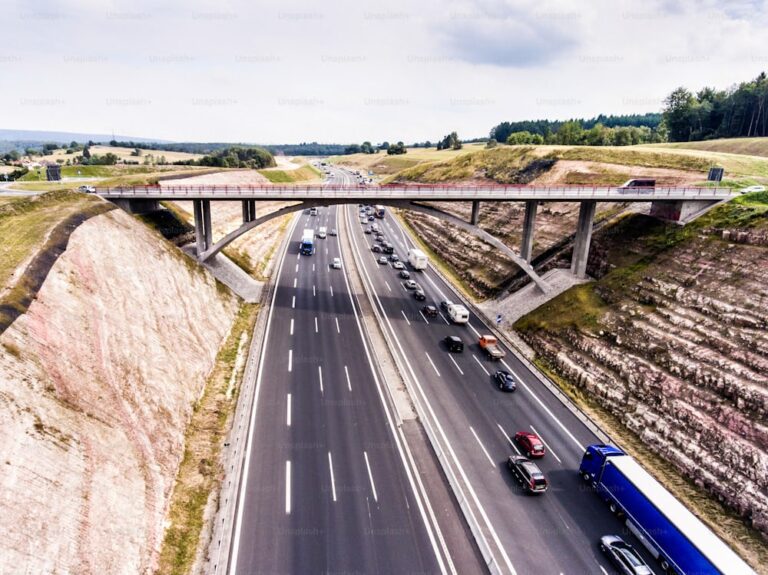A Guide to the Annapurna Circuit Trek: Challenges and Weather
The Annapurna Circuit Trek is one of the most popular trekking routes in the world, attracting adventurers and nature lovers from all over. Situated in the heart of the Nepalese Himalayas, this trek offers stunning views, diverse landscapes, and a rich cultural experience. However, like any high-altitude journey, it also presents its fair share of challenges. Understanding the Annapurna Circuit Trek challenges and the Annapurna Circuit Trek weather is crucial for planning a safe and enjoyable adventure.
In this guide, we will explore the route in detail, delve into the common challenges trekkers face, and provide insights into the weather conditions that will help you prepare for the trek.
Overview of the Annapurna Circuit Trek
What Makes the Annapurna Circuit Special?
The Annapurna Circuit Trek is renowned for its diversity. Starting from the subtropical lowlands and ascending to the high-altitude Thorong La Pass, the trek covers a variety of ecosystems. You will pass through lush forests, terraced fields, traditional villages, and alpine meadows before reaching the snow-covered peaks of the Annapurna Range. Along the way, trekkers are rewarded with breathtaking views of towering peaks like Annapurna, Dhaulagiri, Machapuchare, and more.
Trek Difficulty and Duration
The trek typically takes around 15 to 21 days, depending on the chosen itinerary and pace. The total distance of the trek is approximately 160 to 230 kilometers, making it a moderate to challenging trek. The journey reaches altitudes of over 5,400 meters (17,700 feet) at the Thorong La Pass, which can be daunting for trekkers who are not used to high altitudes.
An In-Depth Look at Annapurna Circuit Trek Challenges
While the Annapurna Circuit is accessible for most fit individuals with basic trekking experience, there are various challenges that trekkers may encounter along the way. These challenges can range from physical exertion to unpredictable weather conditions. Below, we will discuss the most common Annapurna Circuit Trek challenges and how to manage them.
1. High Altitude and Acute Mountain Sickness (AMS)
One of the greatest challenges of the Annapurna Circuit is its high-altitude terrain. Reaching heights above 5,000 meters (16,400 feet) can cause symptoms of Acute Mountain Sickness (AMS), which can range from mild to severe. Common symptoms include headaches, dizziness, nausea, and shortness of breath.
How to cope with AMS:
- Acclimatization: Gradually ascending and allowing your body to adjust to the altitude is essential. The trek is designed with sufficient rest days at various altitudes to help trekkers acclimatize.
- Hydration and Nutrition: Drinking plenty of water and eating high-energy foods will help maintain your strength and reduce AMS symptoms.
- Climbing High, Sleeping Low: It is advisable to climb to a higher altitude during the day but descend to a lower altitude for sleeping, which helps in the acclimatization process.
2. Unpredictable Weather Conditions
The Annapurna Circuit Trek weather can be highly unpredictable, particularly during the shoulder seasons. During the monsoon (June to September) and winter (December to February), conditions can worsen, making the trek more challenging.
How to prepare for weather changes:
- Pack for All Seasons: Trekkers should bring layers of clothing to adapt to varying temperatures and weather conditions.
- Check Weather Reports: Keep an eye on weather updates during the trek to avoid being caught in adverse weather, especially during the monsoon and winter months.
- Know When to Trek: The best time for trekking is generally during the spring (March to May) and autumn (September to November), when the weather is stable, and views are clear.
3. Physical Endurance and Fitness
The Annapurna Circuit Trek requires physical endurance, as it involves several days of trekking in challenging conditions. The long distances and steep ascents can be exhausting, particularly for trekkers who are not accustomed to high-altitude trekking.
How to build fitness for the trek:
- Train in Advance: It’s important to prepare physically before the trek. Cardiovascular exercises like hiking, running, cycling, and swimming will help build stamina.
- Strength Training: Strengthen your legs, core, and upper body to handle the demands of the trek.
- Test Your Gear: Before setting out on the trek, test your gear and make sure your backpack isn’t too heavy. The ideal weight for a trekking bag is between 8-10 kg.
4. Tough Terrain and Steep Ascents
The Annapurna Circuit Trek features rugged terrain, including rocky trails, steep ascents, and long descents. The path can be slippery and challenging, particularly during the monsoon season.
How to handle tough terrain:
- Wear Proper Footwear: Make sure you wear sturdy hiking boots with good ankle support and non-slip soles.
- Take Your Time: Go at your own pace and take regular breaks to avoid exhaustion and prevent injuries.
- Be Mindful of Weather: Slippery conditions can arise during the monsoon, so exercise caution on wet and muddy trails.
5. Limited Access to Medical Facilities
While the Annapurna Circuit Trek is relatively well-trodden, medical facilities are limited, especially in remote areas. In case of injury or illness, you may have to descend to a lower altitude to access proper care.
How to ensure safety:
- Carry a First-Aid Kit: Always have a basic first-aid kit that includes items like bandages, antiseptic wipes, pain relievers, and altitude sickness medication.
- Hire a Guide and Porter: A guide can help navigate the route and assist in emergencies, while a porter can help carry heavy loads, easing the physical strain on you.
- Stay in Contact: Some areas along the trek have basic mobile phone coverage or satellite phones. Stay in contact with the outside world, especially if you’re trekking solo.
Understanding the Annapurna Circuit Trek Weather
The Annapurna Circuit Trek weather plays a crucial role in the success and safety of your trek. From sunny days to heavy snowfall, weather conditions can dramatically change. Below is an overview of the general weather patterns you can expect during different seasons.
1. Spring (March to May): Ideal Trekking Conditions
Spring is one of the best times to trek the Annapurna Circuit. The temperatures are moderate, and the skies are generally clear, providing great visibility of the surrounding peaks. Flowers bloom, and the landscape becomes even more vibrant.
Spring Weather Conditions:
- Lower Elevations: Temperatures range from 10°C to 20°C (50°F to 68°F).
- Higher Elevations: Temperatures can drop to -5°C to 5°C (23°F to 41°F) at higher altitudes.
- Precipitation: There is little to no rainfall in the spring months, making it an excellent time for trekking.
2. Autumn (September to November): Another Great Season for Trekking
Autumn is also a peak season for trekking the Annapurna Circuit. The weather is stable, and the clear skies offer magnificent views of the Annapurna range. The temperatures are cooler compared to spring, but it’s still comfortable for trekking.
Autumn Weather Conditions:
- Lower Elevations: Temperatures vary from 10°C to 18°C (50°F to 64°F).
- Higher Elevations: Temperatures range from -5°C to 5°C (23°F to 41°F).
- Precipitation: There is minimal rainfall during the autumn season, making trekking conditions ideal.
3. Monsoon (June to September): Avoid the Trek During This Season
The monsoon season is characterized by heavy rains, making trekking conditions difficult and dangerous. The trails can become slippery, and landslides are common. The weather is hot and humid, especially at lower elevations.
Monsoon Weather Conditions:
- Lower Elevations: Temperatures range from 20°C to 30°C (68°F to 86°F).
- Higher Elevations: Temperatures can drop to 5°C to 10°C (41°F to 50°F).
- Precipitation: Heavy rainfall is common, leading to muddy and hazardous trails.
4. Winter (December to February): Cold and Harsh Conditions
Winter brings freezing temperatures, especially at higher altitudes. Snowfall is common, particularly at Thorong La Pass, making the trek more challenging. Only experienced trekkers should attempt the trek during this season.
Winter Weather Conditions:
- Lower Elevations: Temperatures range from -5°C to 10°C (23°F to 50°F).
- Higher Elevations: Temperatures can plummet to -10°C to -20°C (14°F to -4°F).
- Precipitation: Snowfall is frequent, making higher-altitude sections dangerous and difficult to traverse.
Tips for a Successful Annapurna Circuit Trek
- Choose the Right Season: As mentioned, the best times to trek are in spring and autumn. Avoid the monsoon and winter unless you have advanced trekking experience.
- Train for the Trek: Ensure that you are physically prepared by engaging in cardiovascular and strength training exercises.
- Pack Wisely: Bring clothing for varying weather conditions, including warm layers for the high-altitude areas and light layers for the lower regions.
- Hire a Guide and Porter: A guide can offer valuable insights into the culture and terrain, while a porter can help reduce the physical load, allowing you to focus on the trek itself.
Conclusion
The Annapurna Circuit Trek is an unforgettable adventure that offers a mix of natural beauty, cultural richness, and personal challenge. However, it comes with its own set of Annapurna Circuit Trek challenges, from altitude sickness to unpredictable Annapurna Circuit Trek weather. Understanding these challenges and preparing for the conditions will ensure a safer and more enjoyable trek. With the right preparation, you’ll be able to fully immerse yourself in the stunning landscapes and cultural heritage that make the Annapurna Circuit one of the best trekking experiences in the world.


